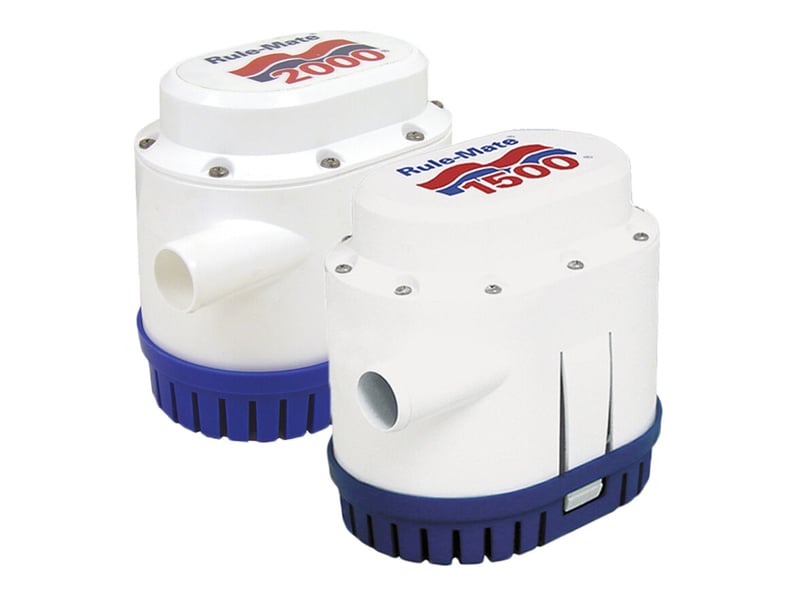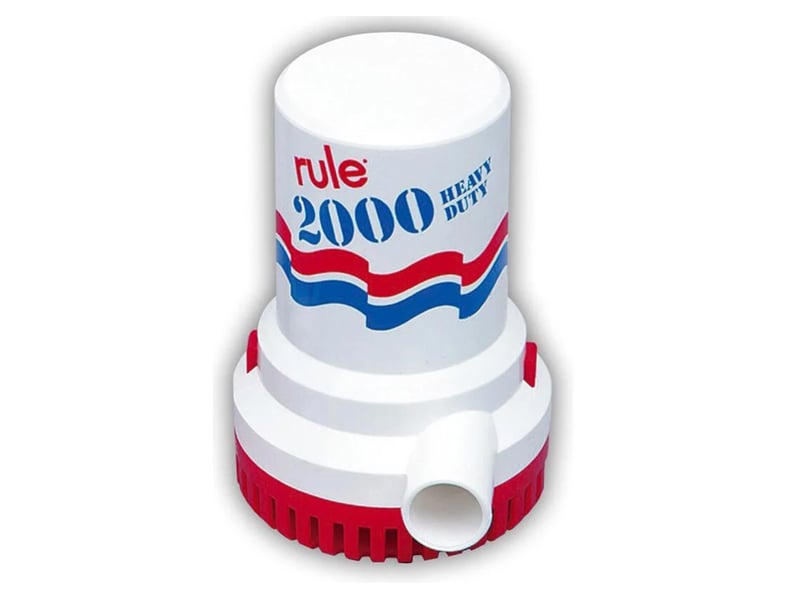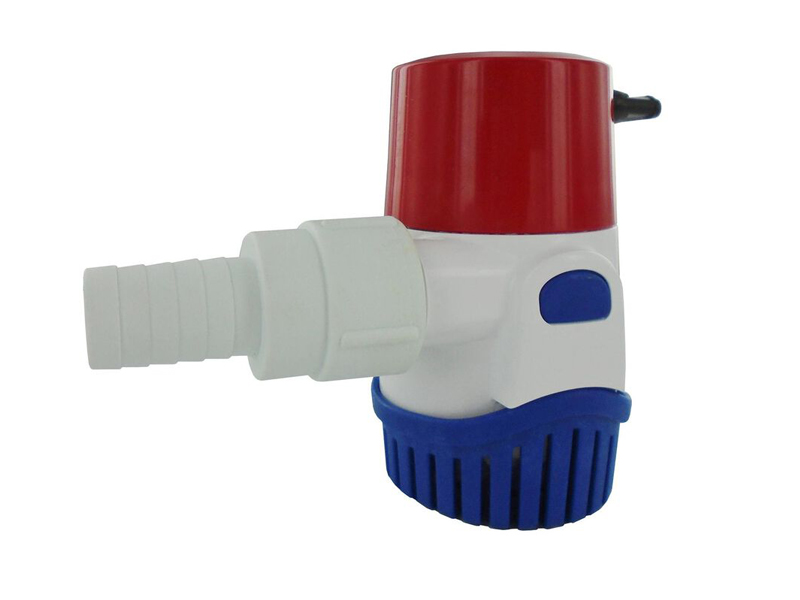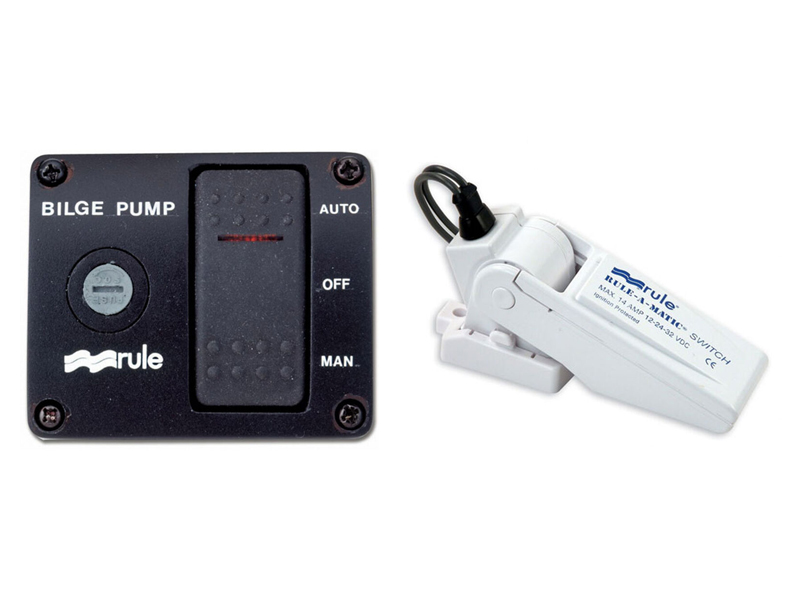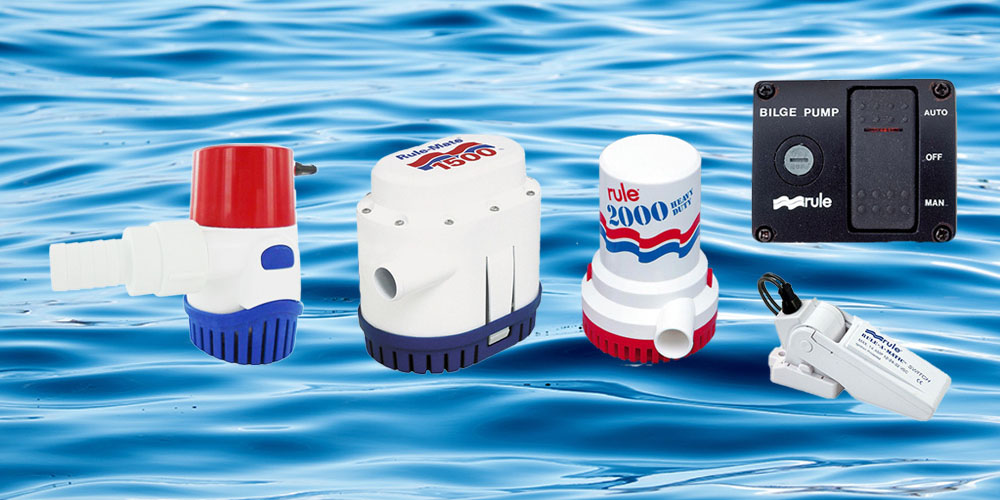
A little water in the bilge is normal—but too much can spell trouble! Whether it's rain, spray, or a slow leak, water finds its way into boats, and that’s where a good bilge pump comes in. These hardworking devices quietly expel nuisance water, keeping your boat lighter, drier, and safer.
But here’s the thing: bilge pumps aren’t miracle workers. They’re designed to handle the everyday dribbles, not sudden hull breaches or rogue waves. Knowing what to expect from a bilge pump—and choosing the right one for your boat—can make all the difference. In this guide, we’ll break down how bilge pumps work, what to look for when buying one, and how to install and maintain your system for maximum reliability.
- The Purpose of Bilge Pumps
- The Limitations of Bilge Pumps
- Types of Electric Bilge Pumps
- Automatic versus Non-Automatic Pumps
- Rule-Mate Automatic Bilge Pumps
- Rule Non-Automatic Bilge Pumps
- Computerized Bilge Pumps
- How Much Capacity Do You Need?
- Pump Panel Switches and Float Switches
- Replacing an Existing Pump
- Bilge Pump Installation Tips
- Conclusion
- Electric Bilge Pump FAQs
- We're Here to Help!
- Related Articles
The Purpose of Bilge Pumps
Virtually all boats end up with nuisance water in the bilge, which must be removed. Water can enter from a propeller shaft packing gland, a leaky portlight, leaky seams in a wood boat, melting ice from the icebox and a multitude of other ways.
Allowing water to collect unchecked in the bilge can lead to a number of issues including unpleasant odors, problems with stability, leaked fuel and oil sloshing about the bilge, the development of blisters in fiberglass hulls and in the worst case, the sinking of your boat. Expelling nuisance water out of your boat is the primary purpose of bilge pumps.
The Limitations of Bilge Pumps
If you are thinking of purchasing a bilge pump as insurance against a sudden inrush of water due to a ruptured hull or large amounts of water taken aboard in a storm, think again. These situations call for high pumping capacity and for the most part, the largest pumps will only buy you a little time to limp back to port or prepare to abandon ship. For emergency situations, it is advisable to have multiple electric pumps and at least one high-capacity manual diaphragm pump.
The following points summarize what you need to know in regard to bilge pumps:
- Virtually no boat has a bilge pump system that is large enough to keep up with a leak caused by hull damage. Bilge pumps are designed for small quantities of water and are not damage control pumps like the ones Coast Guard helicopters drop. The American Boat and Yacht Council standards for electric bilge pumps state that they are “intended for control of spray, rainwater and normal accumulation of water due to seepage and spillage.”
- Never leave a boat with a known leak alone with an automatic bilge pump in the hope that it will keep your boat afloat. We receive an occasional angry letter from a customer who claims that his boat sank because the pump we sold them did not keep their boat afloat. Of course, there are lots of reasons that a pump could fail to remove water from a boat, and you should never trust a pump to keep up with a leak. If your boat has a leak, haul it out and get it fixed.
- Bilge pumps are only as good as the system its attached to. This includes the batteries, wiring and plumbing. An electric bilge pump can last only as long as the batteries and poor and/or corroded wiring or blockages in the plumbing will also have negative affect on the pump’s performance.
With these admonitions out of the way, let's jump into finding the right size and type of pump (or pumps) for your boat.
Types of Electric Bilge Pumps
There are two types of electric bilge pumps: (1) centrifugal and (2) diaphragm.
- Centrifugal pumps comprise the majority of bilge pumps that we offer. They are not self-priming, meaning they must be sitting in the water that they pump. They can usually remove all but the last 1/4”–1” of water from the bilge and work the best when the bilge has a small sump where water collects. By their nature, non self-priming pumps must be submersible. Centrifugal pumps have a built-in strainer at their base, which can be removed for cleaning. They do have a small impeller that can get clogged with debris.
- Diaphragm pumps are self-priming, which means they can draw water up an intake hose and expel it outside the boat’s hull. Diaphragm pumps require an external strainer at the end of the intake hose, since a small amount of hir or bilge debris can cause the valves to clog.
Automatic versus Non-Automatic Pumps
When shopping for a bilge pump, you’ll need to select between an automatic or a non-automatic model. Both require some kind of a switch in order to be turned on or off. Automatic bilge pumps include a built-in switch that automatically turns them on as the water level rises or falls. Non-automatic bilge pumps require a bilge pump float switch or electronic water sensing switch (purchased as part of a package or separately) that must be wired to the pump. Either type is usually wired to a three-position (On-Off-Auto) bilge pump panel switch that enables manual or automatic activation.
Rule-Mate Automatic Bilge Pumps
Automatic bilge pumps like Rule’s Rule-Mate line of pumps feature an internal water-sensing switch which eliminates the need for an external float switch making your installation take up less space than a non-automatic pump. This makes automatic pumps easy to install and great for tight spaces and small bilges. Automatic pumps also avoid any “nuisance tripping” as the boat bumps and jolts through the water which can accidentally trip the float switch on a mechanical pump. Capacities range from 500 to 2000 GPH making them a great choice for a variety of boats.
Rule Non-Automatic Bilge Pumps
Rule’s line of non-automatic pumps, which includes capacities from 360 GPH upwards of 4000 GPH can be operated using a bilge pump panel switch, a float switch or both. Models like the 2000 GPH pump pictured above are quiet, can be run dry without damage, are easy to maintain, and boast a strainer base that allows for tool-less removal for cleaning and maintenance. Make sure to regularly check your float switch to ensure proper operation. A faulty float switch will not activate your pump and potentially lead to excess water in the bilge.
Computerized Bilge Pumps
Options include computerized bilge pumps, like the 500 GPH pump pictured above which boast "smart operation" with an internal computer chip that cycles the pump on every 2 1/2 minutes and automatically shuts it down if no water is detected. Small, compact, computerized automatic pumps are ideal for installations where space is limited such as in the shallow bilges of trailer boats.
How Much Capacity Do You Need?
Bilge pump capacity is rated in gallons per hour, or gallons per minute, under open flow conditions with no restrictions to the discharge. Note that the open flow (zero “head”) capacity of submersible pumps rapidly decreases commensurate with how high the water must be lifted. The rule of thumb is to get the largest model that is practical for your boat. Your choice of pump will of course depend on the physical limitations of the mounting location but, if possible, choose a 1,000 GPH model or larger. While it may seem like a paradox, small boats need large pumps, here’s why:
- Small boat hull volumes are smaller, so they sink more rapidly than large boats.
- Small boats generally have less freeboard, so they swamp more easily than large boats.
- Small boat bilges are generally smaller than large boats, so water can flood the engine and electrical system sooner.
Pump Panel Switches and Float Switches
Non-automatic bilge pumps are activated by an external float switch, a panel switch or both. Three-position switches are a great option as they allow you to activate the pump manually, set the pump to auto to be activated by the float switch or turn the pump off completely when the boat is out of the water. When installing an external float switch, mount the switch at approximately the same level as the base of the pump to help ensure the pump won't run dry.
Replacing an Existing Pump
Match existing hose sizes and wire capacity, unless you want to upgrade the wiring and the thru-hull size too. Buy the largest capacity pump that uses the same hose diameters. For a few dollars more you can increase pump capacity significantly and still keep the same hose diameter. For a new installation, use the largest practical pump size.
Bilge Pump Installation Tips
- Keep discharge hoses as short as possible. Long hoses have more resistance, which reduces pump performance
- Run discharge hoses continuously upward. This helps prevent air locking of the pump.
- Use smooth bore hose. It’s common to install corrugated hose for price reasons, but the ribbed inside reduces flow and decreases the pump's performance.
- Use a vented loop if the pump’s discharge thru-hull can be submerged, especially on sailboats where heel might immerse the fitting that is well above the waterline when the vessel is on an even keel.
- Follow the manufacturer’s recommendations for wire sizes to prevent voltage drop, especially on pumps that draw 10, 15 amps or more. Use the wire charts in the Electrical section of this website and size wiring for a three percent voltage drop.
- Use waterproof butt connectors for any wiring connections in the bilge area.
Conclusion
A bilge pump helps keep your boat drier, but it won’t remove every last drop. Small amounts of water may remain, but a well-chosen and properly maintained pump will handle most nuisance water and prevent excessive buildup.
Remember, bilge pumps are for routine water removal—not saving a sinking boat. Choosing the right pump, install it correctly, and maintain the system to keep your boat safer and more manageable on the water.
Electric Bilge Pump FAQs
How do I know what size bilge pump I need?
Choose the largest capacity pump that you can fit into the available installation areas. Small boats require large pumps because they can flood more quickly than larger boats.
Do bilge pumps remove all the water from my bilge?
No. Most electric bilge pumps leave a small amount of water behind, usually around 1/4”–1” deep. A sponge or hand pump can help remove the last bit of water.
Should I get an automatic or non-automatic bilge pump?
Automatic bilge pumps turn on when water is detected and are the easiest to install because they do not require a separate float switch or water sensing switch. While non-automatic pumps require a separate float switch or water sensing switch to activate, one of these might be your best choice if it offers the capacity (or other features) you desire that are not available in an automatic pump.
Can I rely on my bilge pump to keep my boat from sinking?
Bilge pumps handle small amounts of water, not major leaks. If your boat is taking on water, a bilge pump might buy you time, but may not prevent sinking. Always fix leaks promptly and consider a high-capacity manual pump for emergencies.
How often should I check my bilge pump?
Inspect your bilge pump regularly—before each trip if possible. Test the pump, check for clogs, ensure the float switch works, and confirm the wiring and hoses are in good condition.
What’s the best way to install a bilge pump for maximum efficiency?
Keep discharge hoses short and smooth, run them continuously upward to prevent airlocks, and follow the manufacturer’s wiring recommendations to prevent voltage drop. If the discharge through-hull could be submerged, install a vented loop to prevent backflow.
We're Here to Help!
Need help choosing the right bilge pump or troubleshooting your setup? Our team is ready to assist! Stop by your local store or reach out online—we’ll make sure you have the right pump to keep your bilge as dry as possible.
